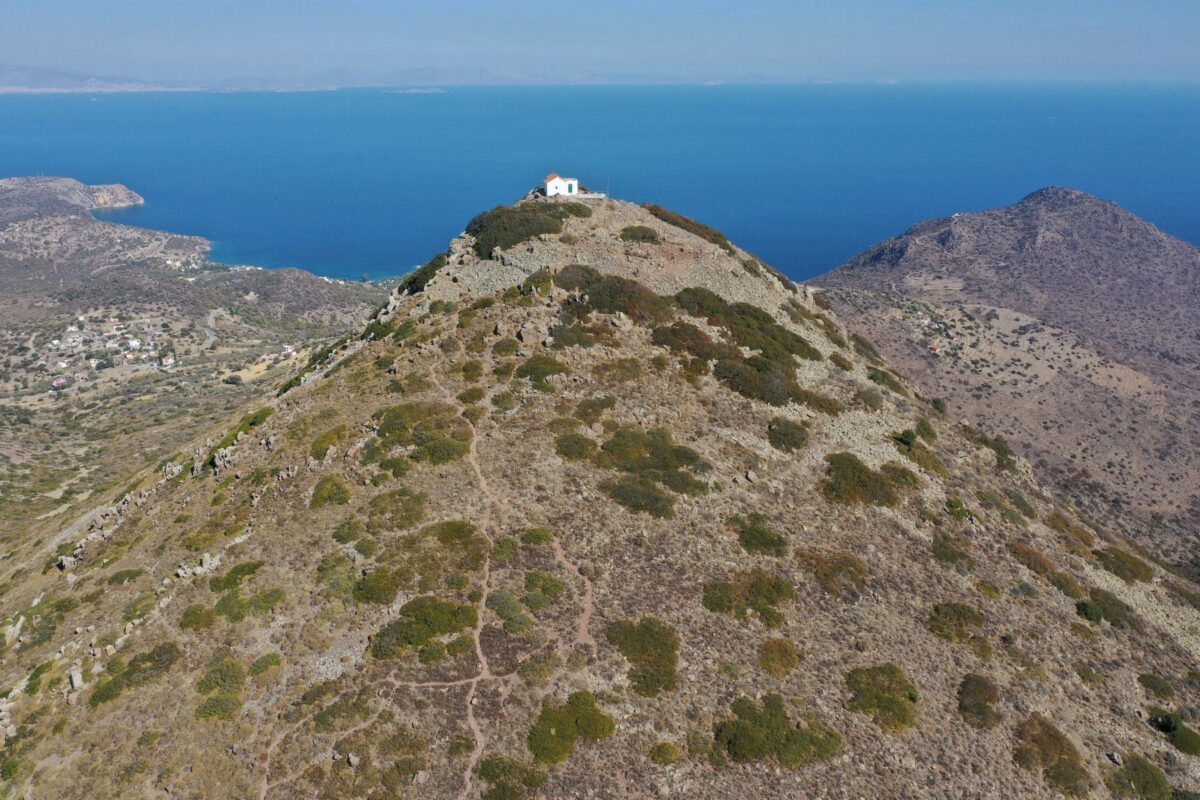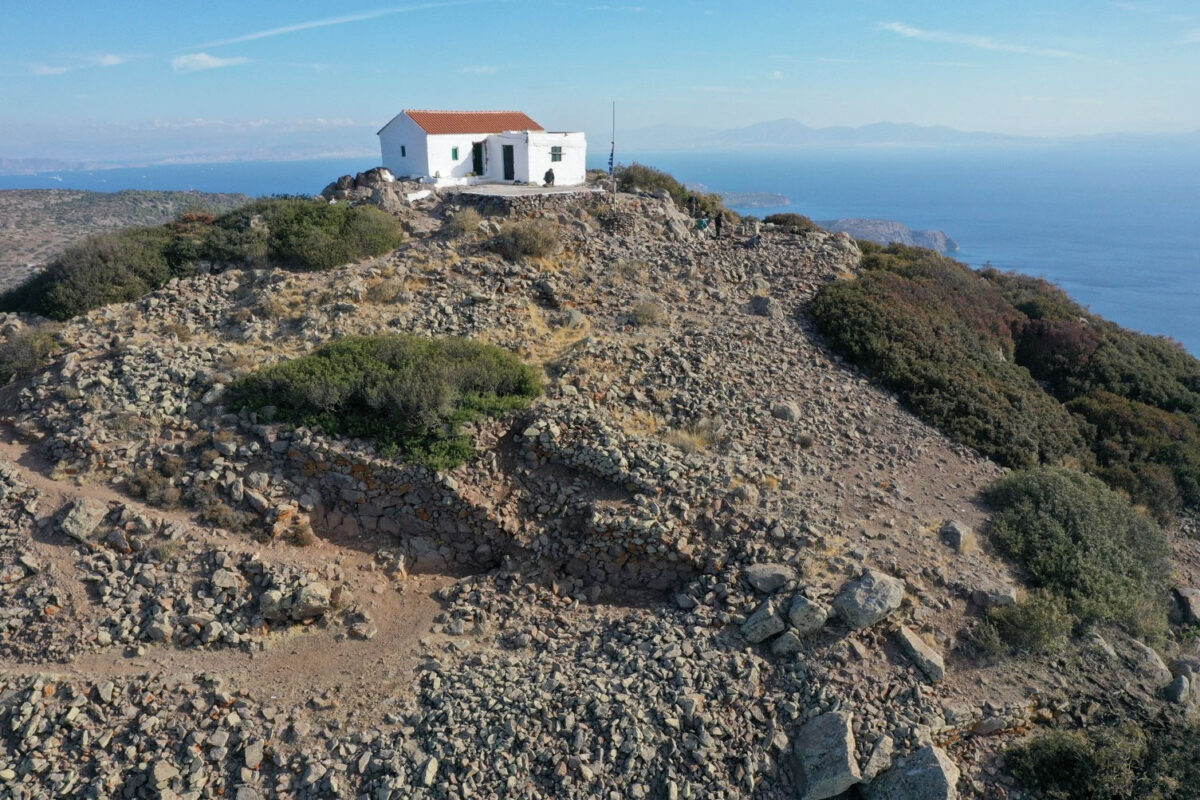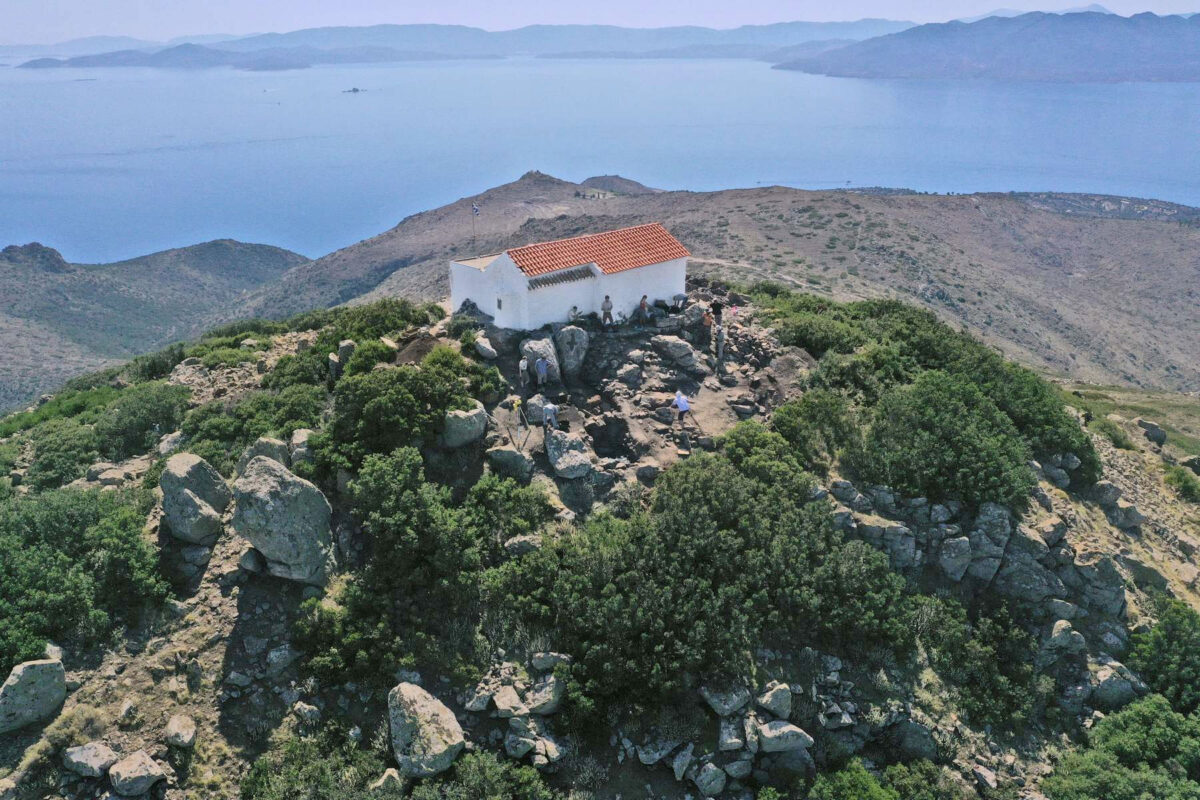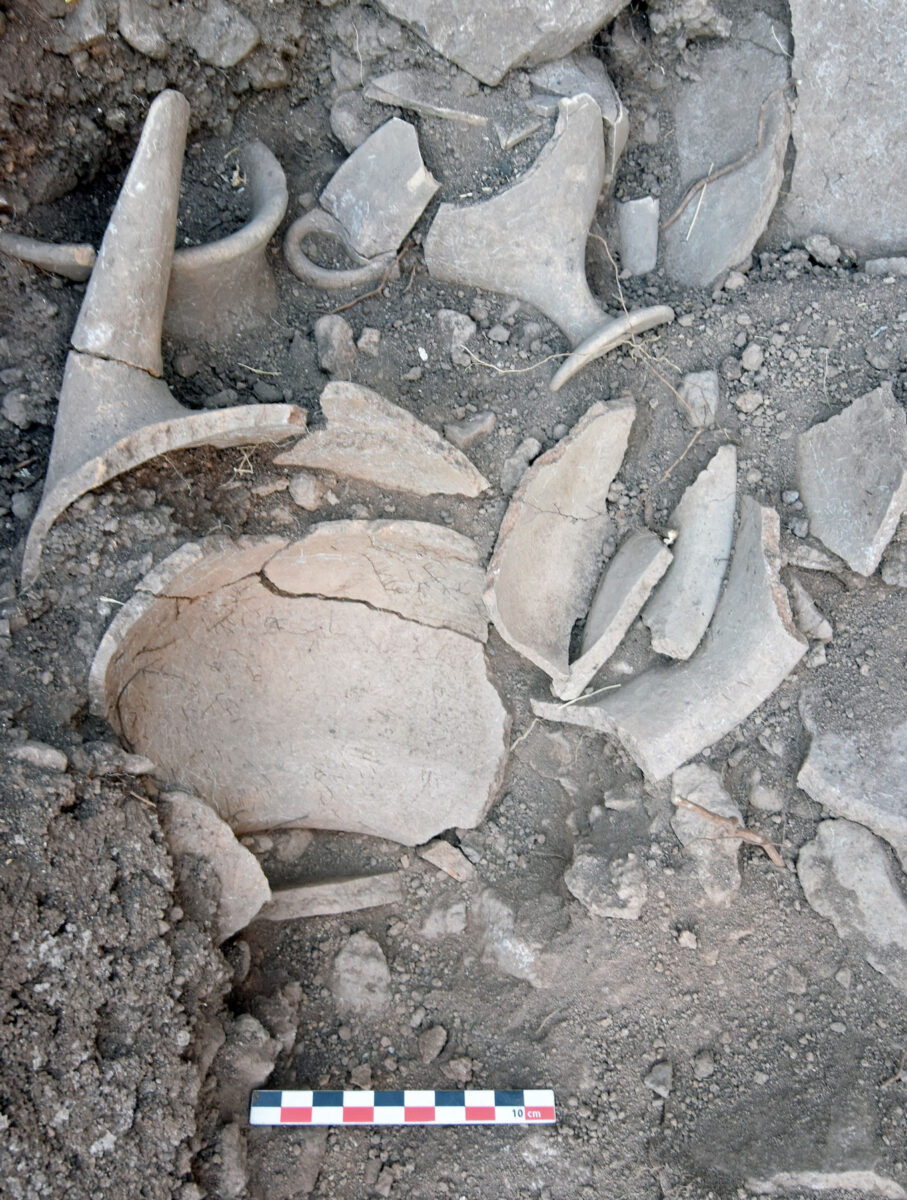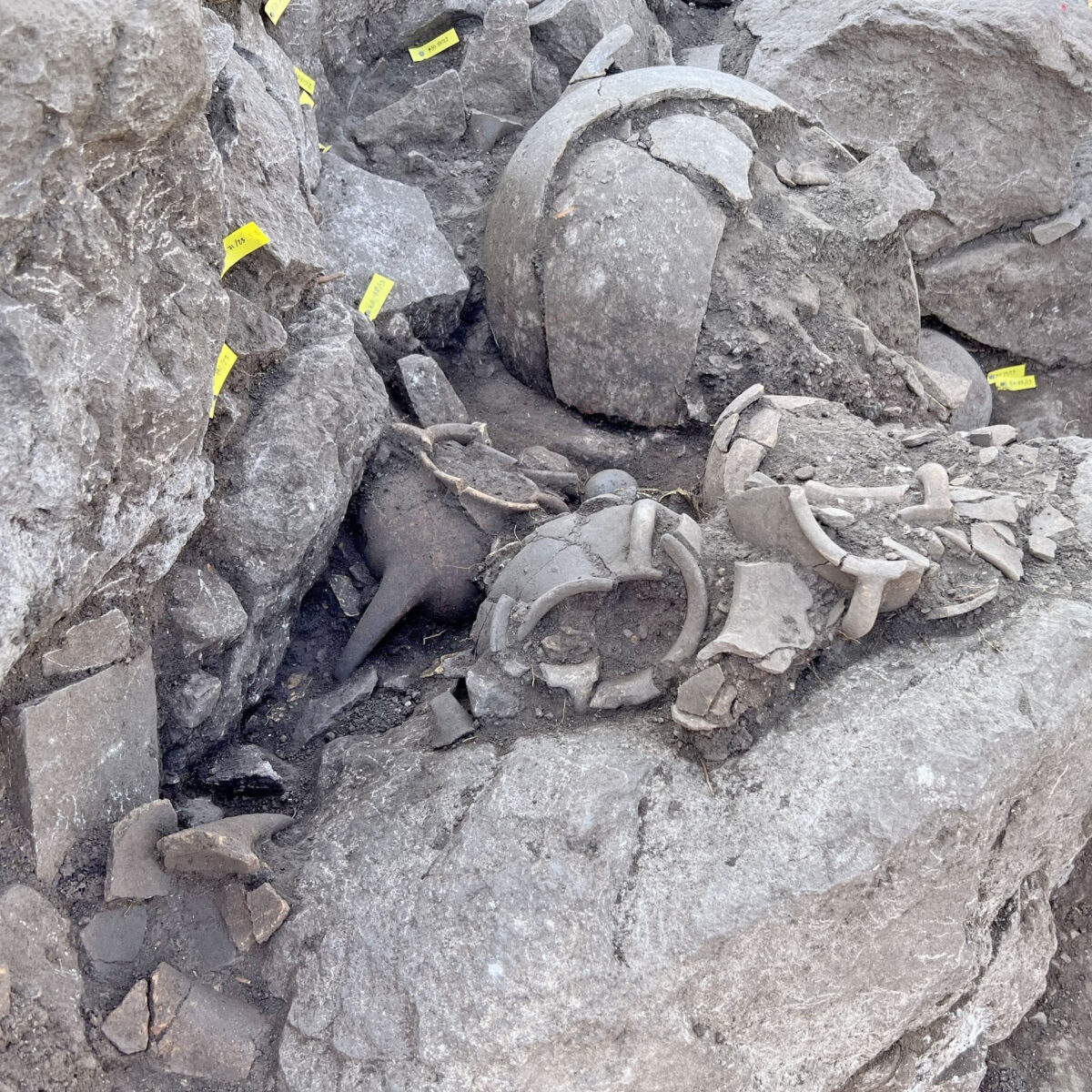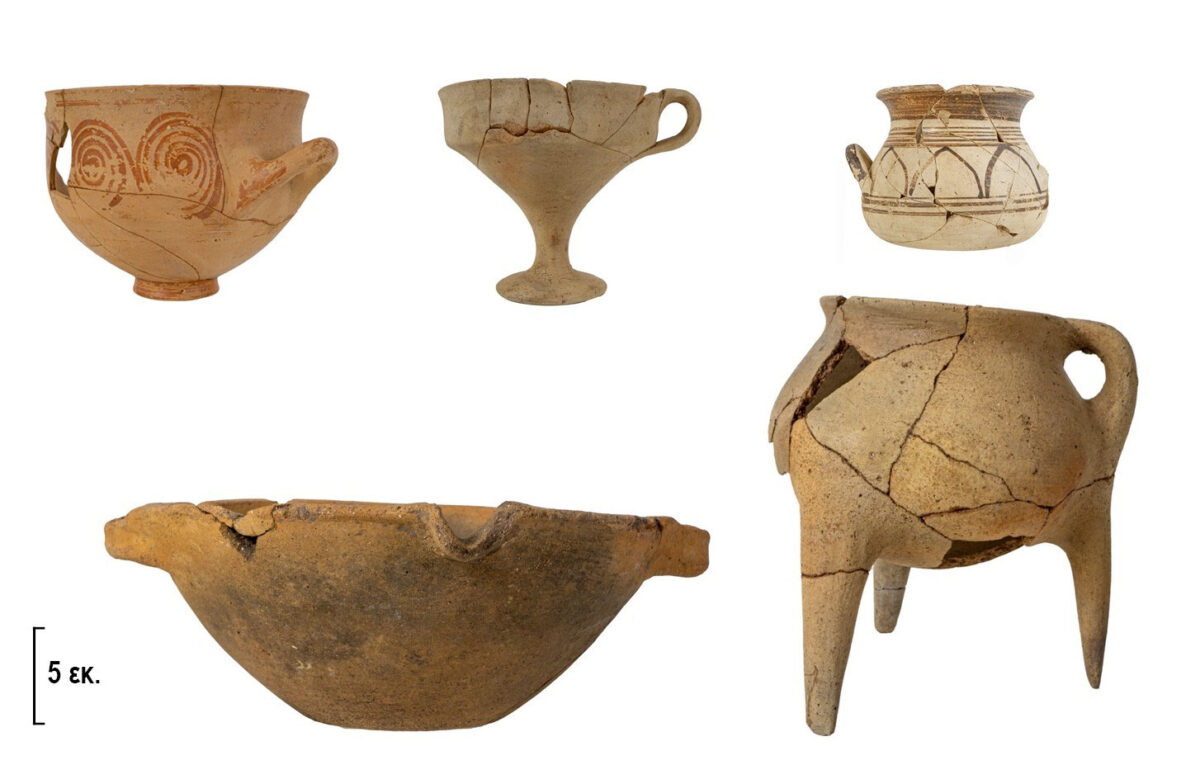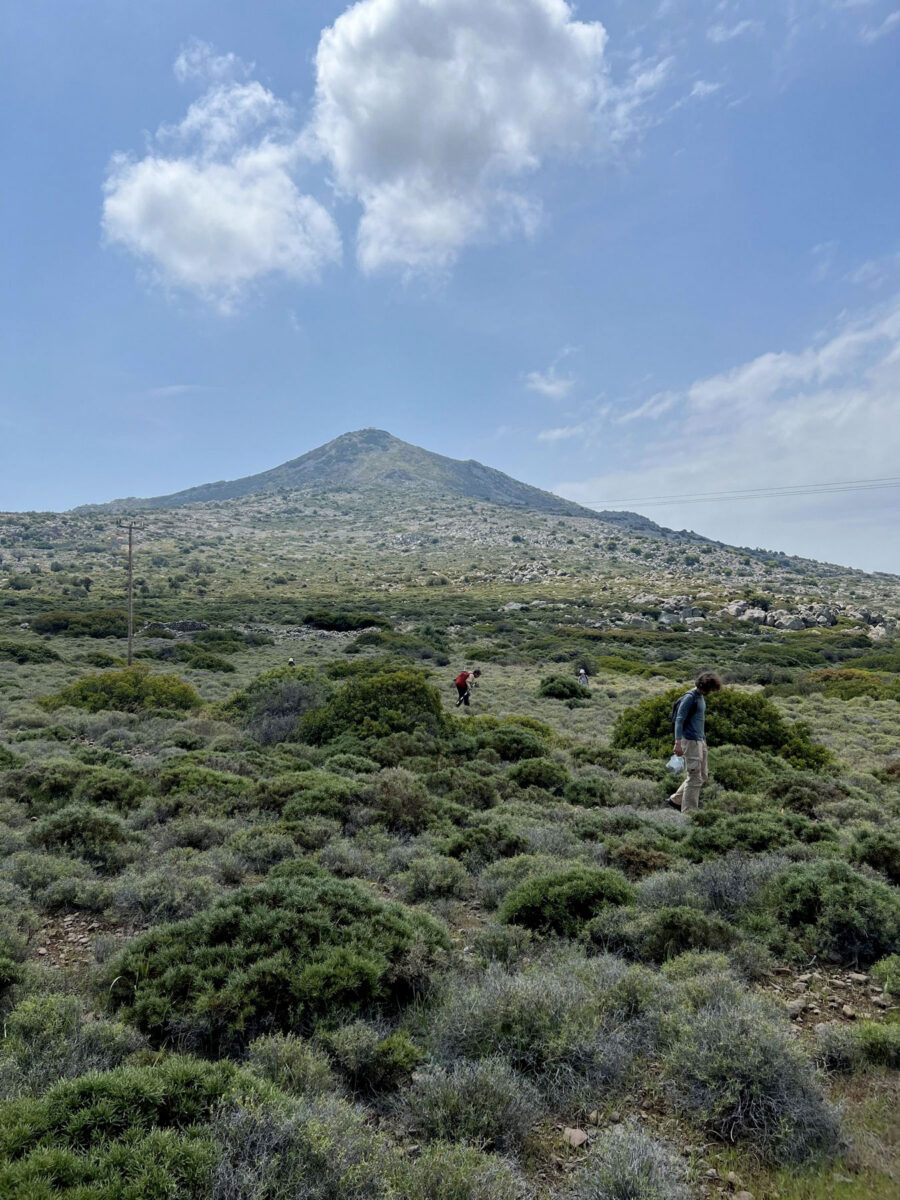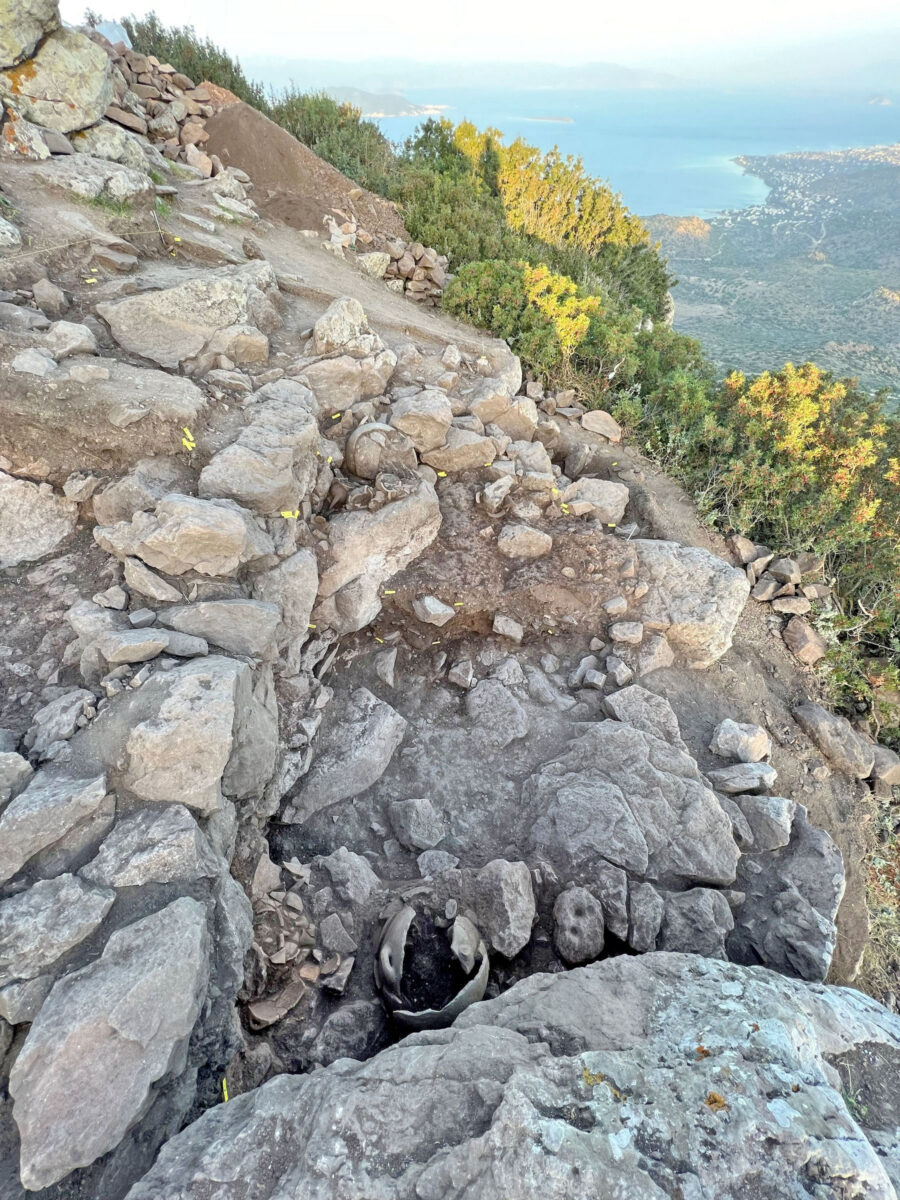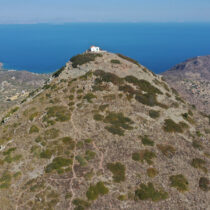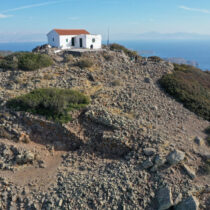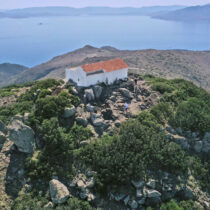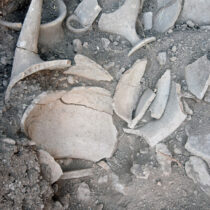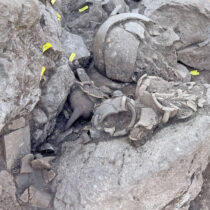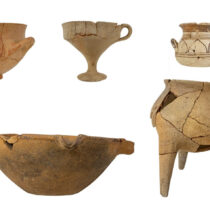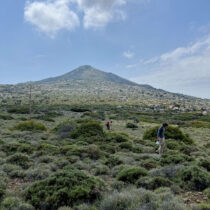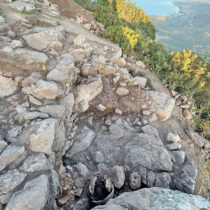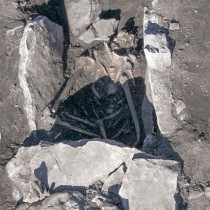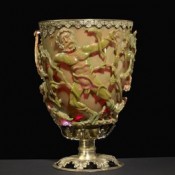A team from the Ephorate of Antiquities of Piraeus and Islands and the Swiss School of Archaeology in Greece has been exploring the summit of Mount Ellanio, the highest mountain in Aegina, since 2021. Where the chapel of Ascension stands today, overlooking the entire Saronic Gulf, there was once a sanctuary dedicated to Zeus. Its main buildings are to be found lower down the northern mountainside, and were previously surveyed by the German Archaeological Institute. However, the presence of a fortified enclosure and dwellings at the summit indicates that the hill was also used as a shelter in times of danger.
As earlier excavations at the beginning of the 20th c. showed, there are remains of human activity on the summit covering a period of almost four millennia. The aim of the new research is to record and date the remains, both those of prehistoric times and the ones associated with the sanctuary of Zeus. Some finds, such as a Mycenaean clay wheel-made figurine, which is on display at the Archaeological Museum of Kolona in Aegina, suggest that the mountain top was used for worship as early as the Bronze Age.
Findings of the Mycenaean period
In 2023, a Mycenaean building measuring 4.5 by 3 metres was excavated. It is bordered by three walls and a large rock. Inside it, about thirty vessels (cooking and storage vessels, drinking vessels, etc.) were found, which were preserved because the area was covered by large stones from the collapse of the walls following its destruction. The vessels date back to the period of the demise of the Mycenaean palaces and the Post-Palatial period. The insecurity prevailing at the time prompted some of the inhabitants of Aegina to settle on higher ground — thus on this peak, which was already known to them as a place of worship.
In deeper layers, on the rock, shells were found dating from the Middle Bronze Age , i.e. the first half of the 2nd millennium BC — a period during which the city of Aegina flourished as a commercial and maritime centre.
The ancient cult of Zeus
The cult of Zeus on Mount Ellanio is known from ancient sources, such as Pausanias. The chapel is built on ancient foundations. The discovery of Corinthian-type clay tiles testifies the existence of an ancient building on top, probably a small temple. Sacrificial waste was found to the north of the chapel, in a black layer with thousands of small fragments of burnt animal bones. Pottery of Geometric to Roman times testifies the long use of the site.
The area around Mount Ellanio
In order to better understand this unique location, the same Greek-Swiss archaeological mission is conducting a surface survey around Mount Ellanio. In this area, now almost uninhabited, there are traces of human presence dating from prehistoric times to the mid-20th century – such as fortifications, retaining walls, an ancient tower, quarries, ancient inscriptions on rocks, paddocks and threshing floors, “souvales” (cisterns), abandoned settlements and a “dragon-house”.
The research will continue for two more years, according to the five-year plan, as the area holds significant new finds. The sanctuary of Hellenic Zeus adds to the enormous archaeological interest of the island of Aegina. This could create an archaeological attraction on the island with the temples of Aphaia, Apollo at Kolona and Zeus at Mount Ellanio.
